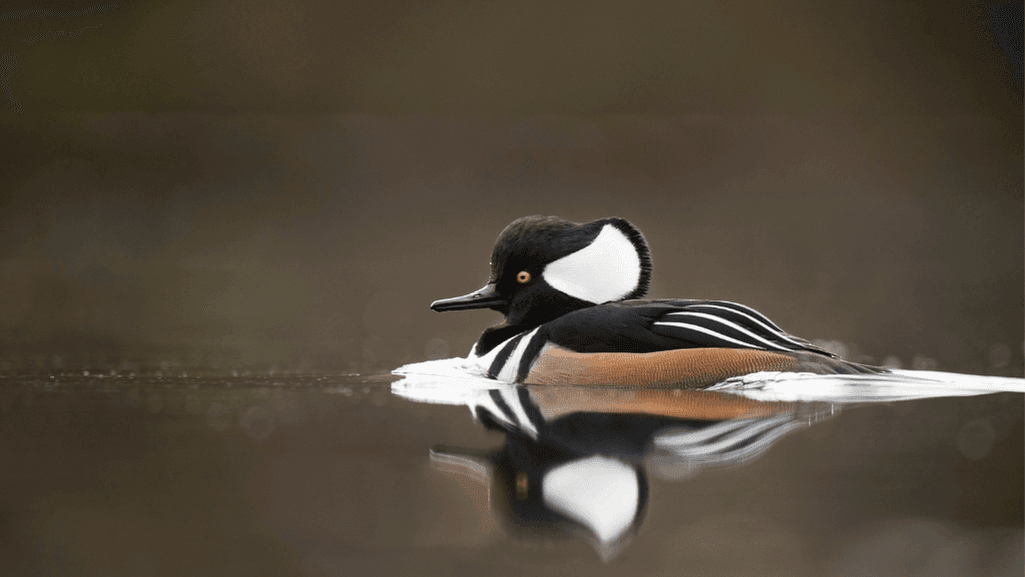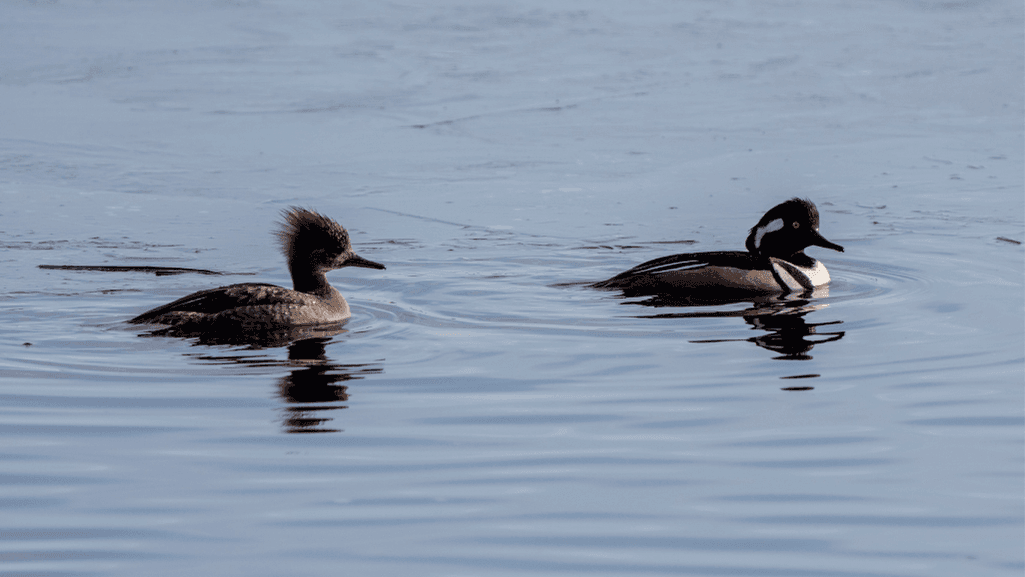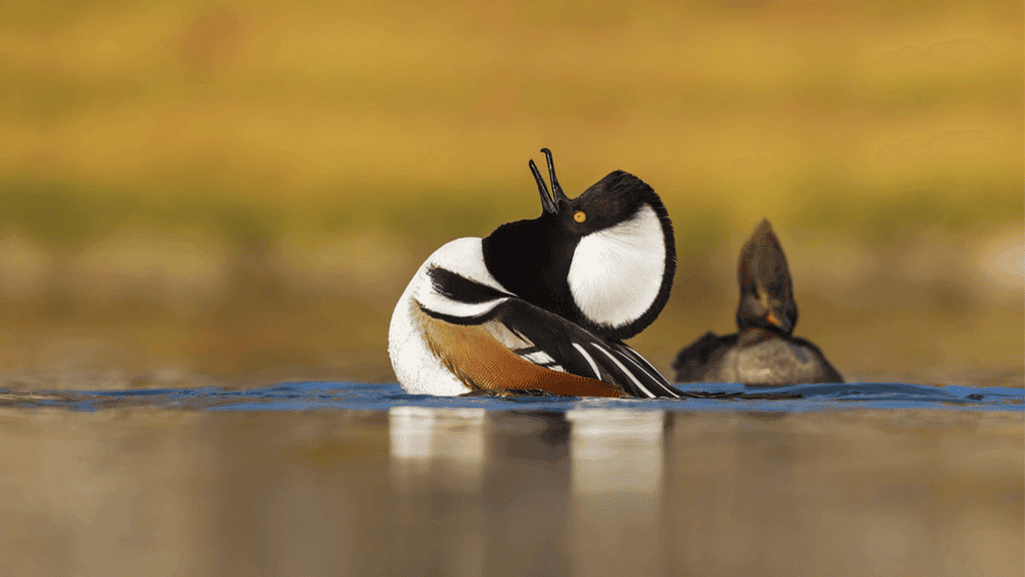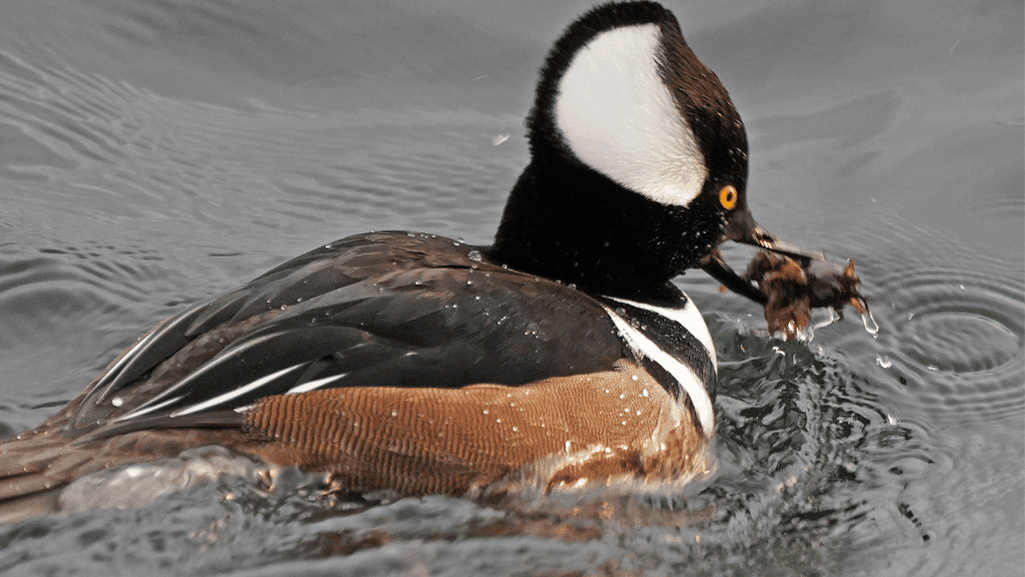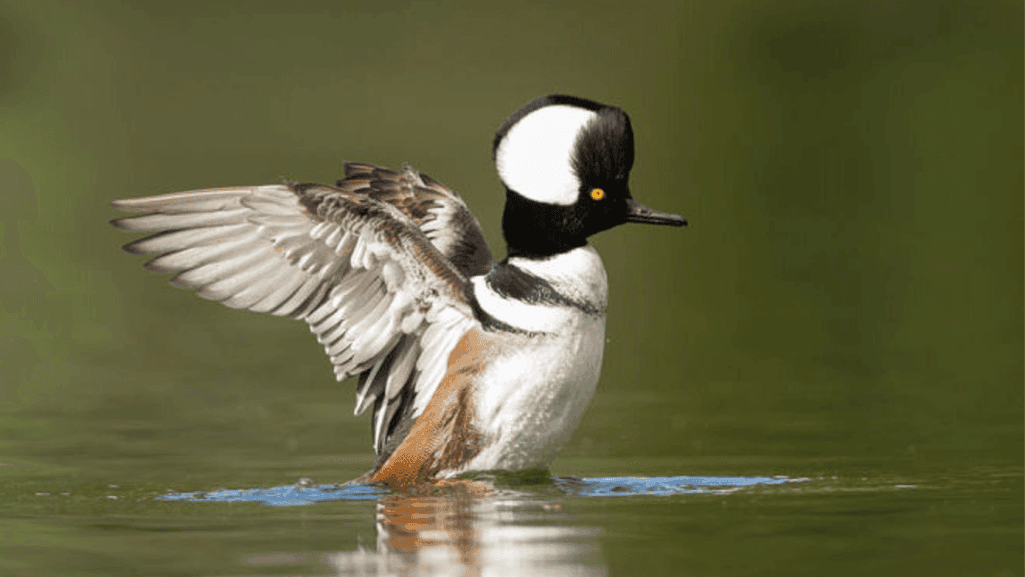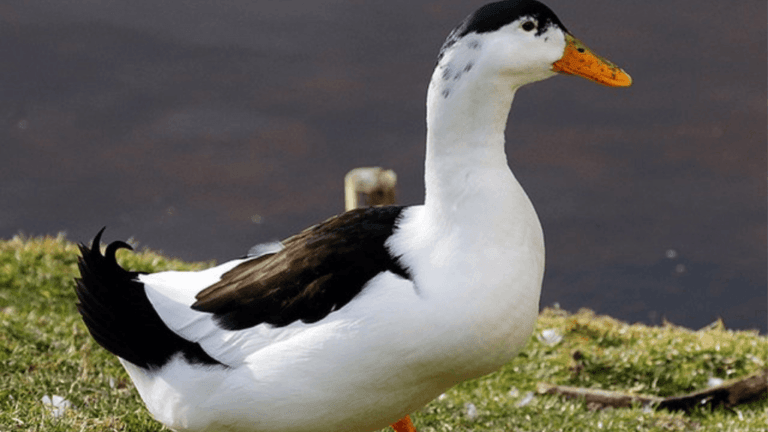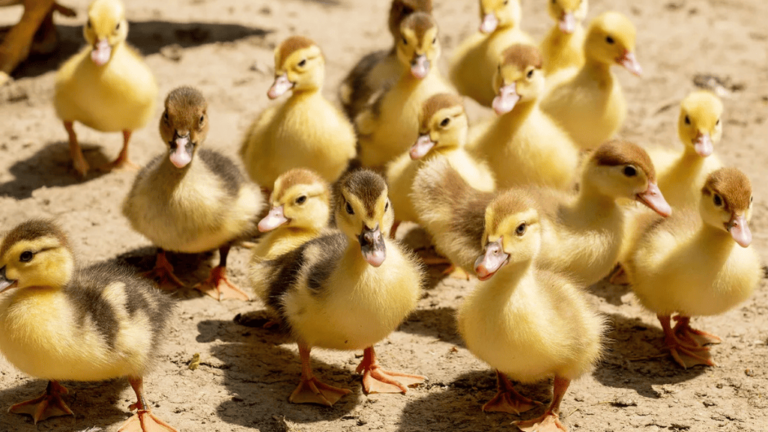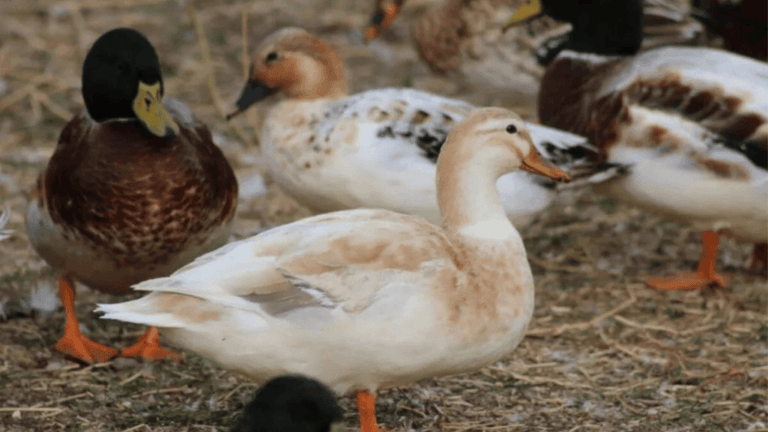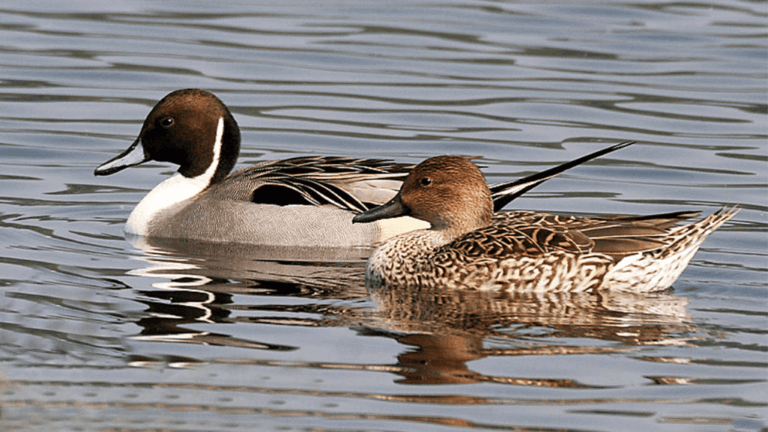Get ready to be amazed by the Hooded Merganser Ducks. These waterfowl are a sight to see with their beauty and grace. They belong to the “sawbill” family and have special bills for catching fish.
These ducks are found in wetlands across North America. Their striking looks and interesting behaviors make them a joy to watch.
Hooded Mergansers can be found all over the continent in winter, except in some areas. They live in many types of water places, like rivers and swamps. This makes it easier to see their unique feathers and movements.
Male Hooded Mergansers gather in groups with a few females for courtship. They show off to impress a mate, proving their fitness.
Seeing Hooded Merganser Ducks adds life to the places they live. They are loved by birdwatchers and nature lovers. Exploring their world is inspiring, showing their beauty and importance in wetlands.
Key Takeaways:
- Hooded Merganser Ducks are small diving ducks known for their serrated bills and stunning appearance.
- These waterfowl have a widespread winter range across North America, inhabiting various aquatic habitats.
- Male Hooded Mergansers engage in captivating courtship displays to impress potential mates.
- The presence of Hooded Merganser Ducks adds color and vitality to the ecosystems they inhabit.
- Discovering the world of Hooded Mergansers is an inspiring journey for birdwatchers and nature enthusiasts.
Introduction to Hooded Merganser Ducks
Get ready to be amazed by the hooded merganser, a small diving duck with a unique look. They belong to the sawbill family and have bills that help them catch fish. Their striking crests and bright colors make them a hit with birdwatchers and nature lovers.
Hooded mergansers live all over North America, in many water places. They like rivers, lakes, marshes, and wetlands, especially where there are trees nearby. Their ability to adapt to different places makes them easy to find for those who know where to look.
Distinctive Appearance and Unique Characteristics
The hooded merganser’s crest is a standout feature. Males have a bold black and white crest, while females have a reddish-brown one. Both have beautiful patterns of black, white, and chestnut-brown feathers, making them stand out.
These ducks are well-suited for life in the water. Their bodies are streamlined, and their legs are strong, allowing them to dive easily. Their serrated bills help them catch and hold onto fish and other underwater creatures. These special features show how well they’ve adapted to their underwater world.
Habitat Preferences and Range
Hooded mergansers live in many parts of North America. They breed in southern Canada and the central and eastern United States. In winter, they move to coastal areas and southern states to find food and shelter.
They love places with lots of vegetation and submerged logs for feeding and nesting. Hooded mergansers nest in cavities, like old woodpecker holes or natural tree cavities. The right nesting sites and plenty of food are key to their habitat choices and where they live in North America.
Physical Characteristics and Appearance
The Hooded Merganser is a striking duck species. It has a unique blend of beauty and functionality. These birds are well-adapted to their aquatic lifestyle, with a length of 16-19 inches and a wingspan of 26 inches.
Male Hooded Merganser’s Striking Plumage
The male Hooded Merganser has stunning plumage. Its most distinctive feature is the expansive white crest bordered by black. This crest can be raised or lowered for dramatic displays during courtship.
The male’s body is primarily black, with a white breast and chestnut-colored flanks. This creates a bold and eye-catching contrast. The male Hooded Merganser is unforgettable, whether in flight or swimming across the water.
Female Hooded Merganser’s Subtle Beauty
The female Hooded Merganser’s beauty is captivating, even if it’s not as bold as the male’s. She has an overall reddish-brown hue and a smaller, reddish crest. Her plumage provides excellent camouflage in her preferred habitats.
Her more subdued appearance allows her to blend in. This is helpful when tending to her nest and caring for her young. Despite differences in plumage, both male and female Hooded Mergansers have streamlined bodies for gliding through the water.
Adaptations for Diving and Fishing
Hooded Mergansers are exceptional divers. Their thin, pointed bills have serrated edges, like tiny teeth. These diving adaptations help them grasp and hold onto slippery fish and aquatic insects.
They have powerful legs and webbed feet for speed and agility in the water. Their streamlined body shape also helps them pursue prey efficiently.
They have excellent underwater vision. Their eyes are positioned towards the front of their head. This provides binocular vision and enhanced depth perception, crucial for finding and catching prey underwater.
The Hooded Merganser’s physical characteristics are remarkable. They contribute to their success in their aquatic habitats. Their beauty and adaptations make them a favorite among birdwatchers and nature enthusiasts.
Behavior and Lifestyle
Hooded Mergansers are fascinating creatures with captivating behaviors and unique lifestyles. These enchanting ducks showcase remarkable adaptations that enable them to thrive in their wetland habitats. From their mesmerizing courtship displays to their devoted parental care, Hooded Mergansers offer a glimpse into the wonders of the natural world.
Courtship Displays and Mating Rituals
During the breeding season, male Hooded Mergansers engage in elaborate courtship displays to attract potential mates. With their striking crests raised and necks swollen, these dapper ducks emit loud, croaking calls that resonate through the wetlands. The males’ head-throwing and crest-raising antics create a spectacular show, showcasing their physical prowess and genetic fitness to prospective partners. These mating rituals are a testament to the intricacies of avian courtship and the vital role they play in ensuring successful reproduction.
Nesting and Breeding Habits
Once a pair of Hooded Mergansers has formed, the female takes charge of selecting a suitable nesting site. These ducks often seek out natural tree cavities or artificial nest boxes near water bodies, providing a secure haven for their precious eggs. The female meticulously lines the nesting cavity with downy feathers, creating a cozy and insulated environment for her clutch, which typically ranges from 5 to 13 eggs.
For approximately 26 to 41 days, the dedicated mother incubates her eggs, rarely leaving the nest. Upon hatching, the downy ducklings face an immediate challenge – leaping from the safety of their nesting cavity to the water below. With an innate sense of courage and determination, these tiny bundles of fluff make the daring jump, instinctively following their mother to the nearest water body.
As the ducklings take to the water, they quickly learn the art of swimming and foraging under the watchful guidance of their mother. Their unique duckling behavior, characterized by their ability to dive and hunt for prey from a young age, is a testament to the Hooded Merganser’s remarkable adaptations. Through the tireless efforts of their devoted parents, these young ducks develop the skills necessary to thrive in their wetland homes, ensuring the continuation of this magnificent species for generations to come.
Hooded Merganser Ducks’ Preferred Habitats
Hooded Merganser ducks are fascinating birds that live in many wetland habitats in North America. They love different places, from the green marshes of the southeast to the swamps and forests of the Pacific Northwest. Let’s look at where these ducks like to live and why.
Freshwater Wetlands and Marshes
Hooded Mergansers love the rich wetlands and marshes they find in their home ranges. These places have lots of plants and shallow water, perfect for finding food and hiding. In the southeast, they like the wet forests with tall trees like oak and cypress.
These trees are great for nesting, either in natural holes or special boxes. This helps their babies grow up strong.
Wooded Swamps and Flooded Forests
In wooded swamps and flooded forests, Hooded Mergansers move easily through the water. These places are full of water, making them magical. The ducks dive down to find fish, crayfish, and bugs in the water.
The trees above keep them safe and hidden. These places are like a safe home for them.
Hooded Mergansers prefer places with water, plants, and trees. They like the mix of open water and forest. They find peace and food in these different wetland areas. We must protect these places for the ducks and for us.
Diet and Feeding Habits
Hooded Mergansers are amazing diving ducks. They have bodies made for swimming and strong legs for diving. Their bills are like saws, helping them catch fish, crustaceans, and insects.
Skilled Divers and Underwater Hunters
Seeing a Hooded Merganser dive is incredible. They can dive deep and stay underwater for up to a minute. Their sharp eyes and quick moves make them great hunters.
These ducks mainly eat small fish and invertebrates. They go after many fish types, like minnows and sunfish. They also eat crayfish, shrimp, and insects like dragonfly larvae.
Primary Prey: Fish, Crustaceans, and Aquatic Insects
The food Hooded Mergansers eat changes with their surroundings. In wetlands, they mostly hunt fish and insects. In wooded swamps, they eat tadpoles, frogs, and small amphibians too.
Even though they mostly eat fish, they sometimes eat plants. This helps them survive in different places and find plenty of food.
The oldest Hooded Merganser was a male, 14 years and 6 months old. He was banded in Minnesota in 1995 and found in Mississippi in 2009. This shows how long they can live in the wild.
Conservation Status and Threats
The Hooded Merganser is a stunning diving duck and the smallest in North America. It is listed as “Least Concern” by the International Union for Conservation of Nature (IUCN). This bird breeds only in North America, found from Nova Scotia to eastern Oklahoma and northern Louisiana. It also lives in parts of coastal and southern British Columbia, Washington state, Oregon, and western Montana.
Even though they are stable now, Hooded Mergansers face many threats. Habitat loss and pollution are big problems. Wetland draining and shoreline development hurt their homes. This makes it crucial to protect and restore wetlands.
Current Population Trends
In Canada, the Hooded Merganser population has grown since the 1970s. They are most common in the Great Lakes Region, including southern Ontario and Quebec. They are also found in southeast Saskatchewan, southern Manitoba, and the Maritimes. Their numbers are good, meeting conservation goals.
Habitat Loss and Degradation
Habitat loss and pollution are major threats to Hooded Mergansers. Wetlands are drained for farming or development. Pollution and shoreline changes also reduce their homes. Deforestation and acid rain affect their nesting sites and water quality.
Conservation Efforts and Management Strategies
Many groups work to save Hooded Mergansers. The American Bird Conservancy (ABC) helps in the southeastern United States. Ducks New World educates people about ducks and supports conservation.
Efforts include protecting wetlands, setting up nest boxes, and watching population numbers. These actions help keep Hooded Mergansers healthy, especially in the Lower Mississippi Valley.
- Wetland protection and restoration
- Nest box programs
- Population monitoring and research
- Collaboration with conservation organizations
- Public awareness and education campaigns
By protecting their habitats, we can help Hooded Mergansers thrive. This way, they will continue to amaze nature lovers for years to come.
Observing Hooded Mergansers in the Wild
For birdwatching fans and nature enthusiasts, seeing Hooded Mergansers in the wild is truly amazing. These stunning diving ducks live in different water places, especially in winter. With binoculars or a spotting scope, you can see their beauty and actions up close.
To see Hooded Mergansers, check out freshwater lakes, wooded wetlands, and tidal shallows. These spots are perfect for them to find food like small fish and insects. Look for their unique fan-shaped crests and striking black and white feathers, especially on males.
Watching Hooded Mergansers is full of interesting moments. See how they dive deep to catch food with their special bills. In breeding season, males show off with fancy dances and raised crests to attract females.
To get better at wildlife photography and learn more about Hooded Mergansers, use field guides for waterfowl or your area. These guides have lots of info on how to tell them apart, where they like to live, and what they do. It makes seeing these amazing ducks even more special.
Always be careful and keep a safe distance when birdwatching. This helps protect the Hooded Mergansers and lets you enjoy watching them. By doing this, you’ll learn more about the amazing world of birds.
Interesting Facts and Trivia
Hooded Mergansers are fascinating ducks known for their striking looks and amazing abilities. These birds have caught the eye of many bird lovers and nature enthusiasts. Let’s explore some interesting facts and the cultural significance of these amazing creatures.
Unique Adaptations and Abilities
Hooded Mergansers are incredible divers. They can dive up to 6 meters deep and stay underwater for a long time. Their special bills help them catch and hold onto fish.
These ducks have up to 12,000 skin muscles for feather control. This lets them stay sleek while diving and swimming. Despite being small, they can fly fast during migration.
To learn more about Hooded Mergansers, visit SeaWorld’s informative article on these fascinating birds.
Cultural Significance and Folklore
Hooded Mergansers are special in many cultures. In some Native American traditions, they are admired for their beauty and grace. Their striking looks have made them symbols of elegance and mystery.
These ducks have inspired many bird lovers to watch and appreciate them in nature. If you’re interested in learning more or sharing your experiences, contact Ducks New World. They are a community dedicated to waterfowl appreciation and conservation.
As we study and admire Hooded Mergansers, we must protect their homes. By sharing our love for these birds, we can inspire others to help protect our natural world.
Conclusion
Hooded Merganser ducks are truly special and deserve our love and protection. Their unique looks, interesting ways of living, and important role in wetlands show the beauty of North American wildlife. By working to save their homes, we help future generations see these amazing birds.
Watching and taking pictures of Hooded Mergansers helps us connect with nature. Seeing them dive or show off their courtship displays teaches us about the life in wetlands. Blane Klemek’s article reminds us of the joy and wonder these birds bring.
Let’s work together to protect Hooded Mergansers and their homes. By spreading the word about wetlands, supporting conservation, and enjoying wildlife responsibly, we help these birds thrive. Our efforts and love for Hooded Mergansers will keep their beauty and value alive for years to come.


